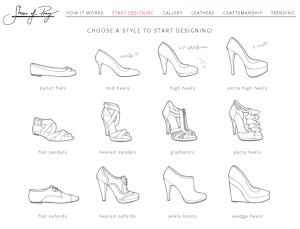“Shoezam” app mimics Shazam to image, identify, and replicate shoes on the street
This morning I attended the Innovation Bay breakfast on Where to for retail now?.
It was a fascinating discussion, which was definitely useful as I develop my forthcoming Future of Retail framework. (Still working on it, I don’t know when it will be ready for the public, more later.)

Michael Fox, founder of the highly innovative and successful Shoes of Prey, spoke about some of what they envisage for the future of retail.
One of their internal initiatives is an app they dub “Shoezam”, which acts like Shazam in that people can take an image of a shoe they like in the street, which the app analyzes so that users can immediately order that shoe for themselves.
Michael said that the team is working on the app in background mode, for example during in-house hackathons, as it is a challenging problem and will take some time to develop an app that can extract the subtleties of the shoe it is looking at.
Of course there is a major difference to Shazam. In Shazam users that hear a song and like it can identify it in order to buy the song, with the creators of the music getting paid (hopefully).
However Shoezam – as I understand it – won’t identify the actual shoe it is looking at so that users can order the same shoe by the same maker. It identifies the characteristics of the shoe so they can be duplicated, or approximated as closely as possible, in the Shoes of Prey custom shoe creation process.
The implications of this are profound.
With 3D printing and other customized manufacturing techniques, apps that allow the essence of items to be captured through images will mean that anything can be duplicated virtually at will.
What will this mean for designers?
In a world of open information flows and inexpensive manufacturing all recognized designers are already getting copied wholesale. Yet this may be miniscule compared with what is coming.
Of course recognition technologies used in the app and the manufacturing processes will not be fabulous for some time to come. Customers will only be getting an approximation of the original.
Over time the quality will improve, gradually and surely.
Yet even at the apogee of replicating technologies, there will of course be a premium for buying original designer clothes and objects, for many reasons. It will give prestige and status to have originals, people will prefer to reward designers, and there will always be some quality difference. Quality will be truly to the fore.
But will fashion designers, among others, see their earnings plummet, as they have for many musicians?
I suspect the best will do very well indeed, even in a world of possibly wholesale replication. But there are many unknowns.
We have to recognize that these replication technologies are inevitable. And one of the issues we need to focus on is that the creators – rather than the copiers – must be sufficiently rewarded for the value they create.
